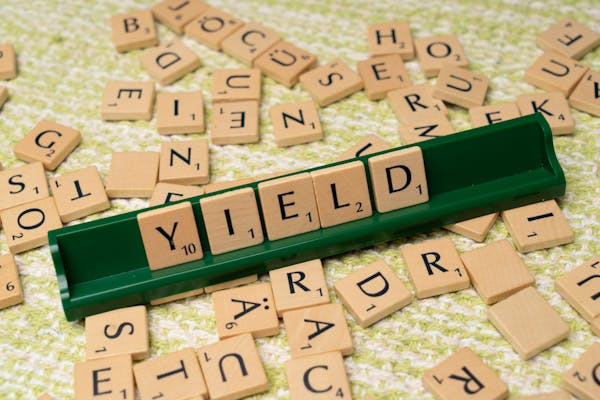Link copied
Fed holds rates steady, stays on track for 2 cuts in 2025
general :: 10hrs ago :: source - yahoo finance
By Jennifer Schonberger
 Federal Reserve Chair Jerome Powell at the Federal Reserve in Washington, D.C., on June 2. (AP Photo/Mark Schiefelbein)
Federal Reserve Chair Jerome Powell at the Federal Reserve in Washington, D.C., on June 2. (AP Photo/Mark Schiefelbein)
The Federal Reserve held interest rates steady Wednesday for the fourth meeting in a row and kept a projection for two rate cuts this year.
The central bank voted unanimously to maintain its benchmark interest rate in the range of 4.25%-4.5%. The Fed has now held rates at that level for six months since last cutting in December.
Read more: How the Fed rate decision affects your bank accounts, loans, credit cards, and investments
Fed officials still see two rate cuts this year, the same amount projected in March, amid uncertainty of how the Trump administration’s policies, from tariffs to immigration to tax policy, will impact the economy.
What the central bank did change, however, was its outlook on inflation and economic growth amid those uncertainties. Fed officials now see inflation staying higher this year than previously estimated and economic growth going lower than prior predictions.
They estimate that the core Personal Consumption Expenditures (PCE) measure of inflation will be 3.1%, compared with 2.8% previously. Though they see that measure dropping back to 2.4% in 2026.
And the US economy is now projected to grow at an annualized pace of 1.4% instead of 1.7%. The unemployment rate is seen edging up to 4.5% from 4.4% previously.
“Uncertainty about the economic outlook has diminished, but remains elevated,” officials said in their policy statement, softening their language. Fed officials also removed language that previously said "the risks of higher unemployment and higher inflation have risen."
Fed Chair Jerome Powell told reporters at a press conference that recent inflation reports have been favorable but that goods prices have been moving up following the introduction of new tariffs and there could be more of that this summer.
"We’re beginning to see some effects, and we do expect to see more of them over the coming months."
Thus, the right thing to do for now, he added, is “hold where we are” on rates.
“What we are waiting for to reduce rates is to understand what will happen with the tariff inflation. There is a lot of uncertainty about that,” but “ultimately the cost of the tariffs has to be paid."
Even though the Fed's projections for cuts in 2025 stayed at two, there were a variety of estimates among policymakers — speaking to a growing divide within the central bank about the direction of monetary policy.
Eight officials estimated two rate cuts this year, compared with nine who made that prediction in the March round of projections, while seven saw no cuts this year compared with the four officials who made that call previously.
Two see one cut happening in 2025, compared with four officials who thought so previously, and two policymakers predicted three cuts.
Fed officials also now see fewer cuts happening in 2026 and 2027 than previously predicted.
“We have pretty healthy diversity of views on the committee,” Powell said Wednesday, adding that “people can look at the same data and evaluate the risks differently.”
He predicted those differences among forecasts will “diminish” as actual data gets digested.
The decision by the Fed to hold rates steady again will likely not please Trump, who has called on Powell privately and publicly to cut rates, even saying last week that he "may have to force something."
Ahead of the Fed's rate decision Wednesday, Trump again spoke extensively to reporters about his displeasure with Powell.
“I call him 'too late Powell' because he’s always too late," Trump said, adding, "I think he hates me" and musing about appointing himself to the Fed.
"Maybe I should go to the Fed; I'd do a much better job."
Trump has been citing lower inflation as a reason for the central bank to cut, noting recent readings that have shown milder increases in prices, and he did so again on Wednesday.
“We have no inflation, we have only success," Trump said. "I’d like to see interest rates go down."
When asked about Trump’s pressure on the Fed, Powell told reporters Wednesday that what he and his colleagues at the Fed want is a solid economy.
“That is pretty much all that matters to us.”
When asked if he would stay as a Fed governor after his term as chair is up next May, he said, “I’m not thinking about that.”
Read more: How much control does the president have over the Fed and interest rates?
This week top market trends.
-
Bitcoin ETFs Attract $667.4 Million In Weekly Inflows As Bullish Momentum Builds Toward New All-Time Highs
2025-05-23 :: crypto :: benzinga -
Jittery markets await Fed as Mideast conflict rages on
2025-06-18 :: stock :: reuters -
Wary Wall Street positioning leaves room for S&P 500 to rally
2025-06-10 :: stock :: bloomberg -
Market today: Wallstreet is sinking,let me walk you through on what's currently trending
2025-06-13 :: general :: investorshd -
US banks tiptoe toward crypto, awaiting more green light from regulators
2025-05-28 :: crypto :: reuters




